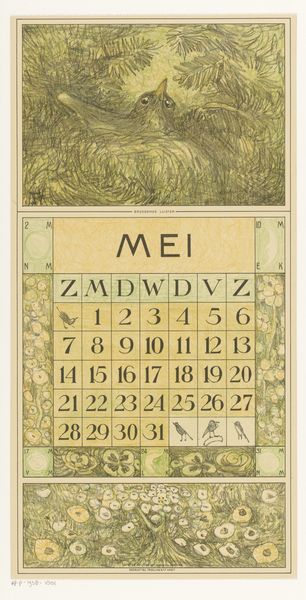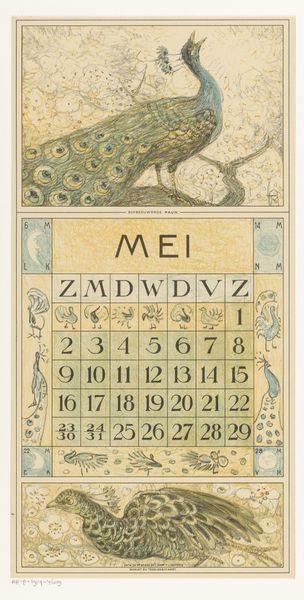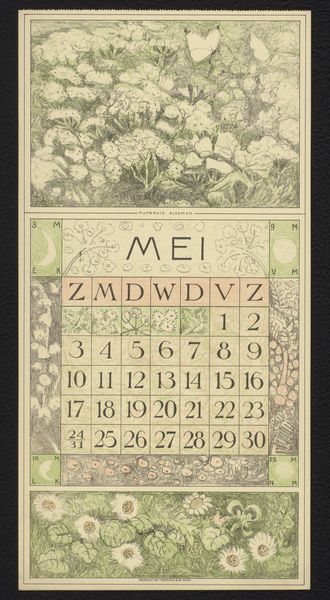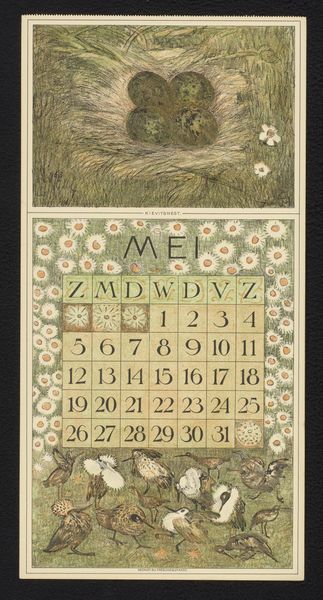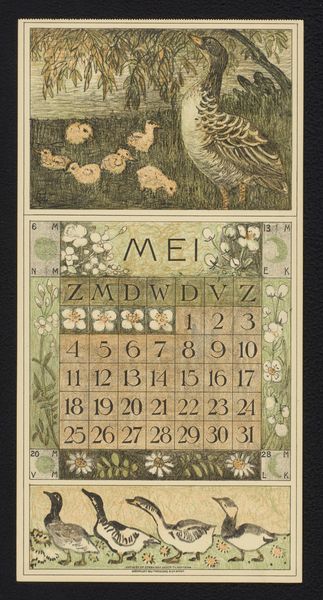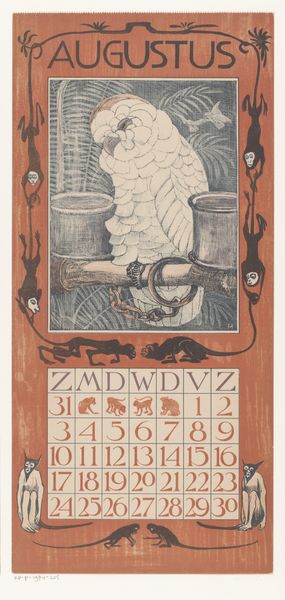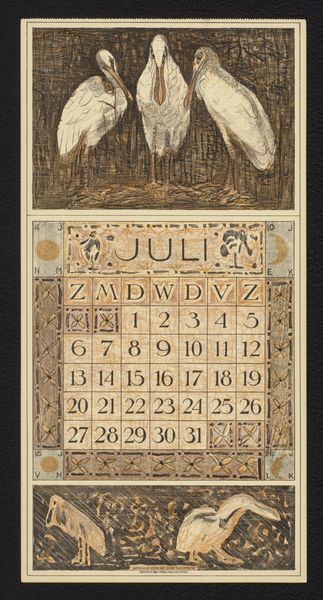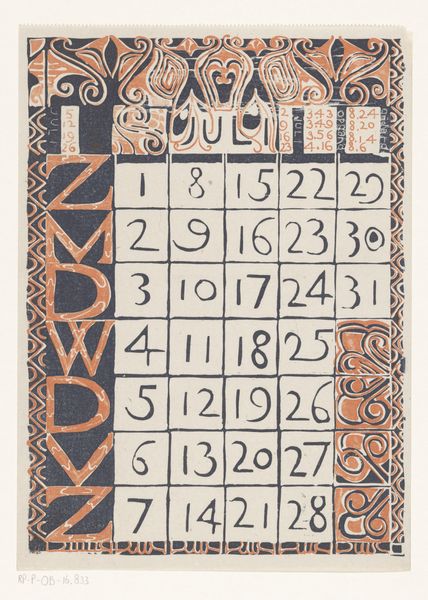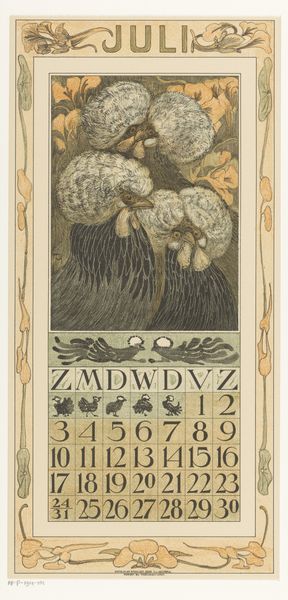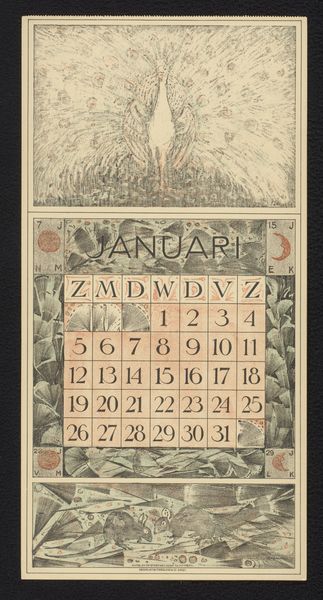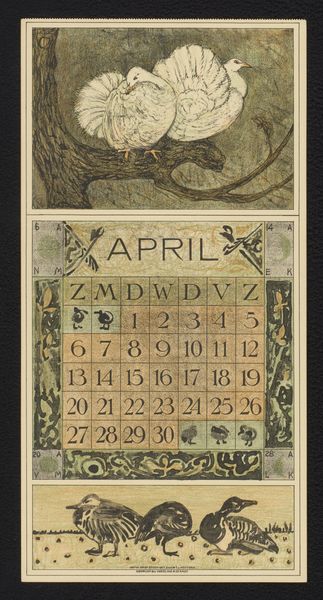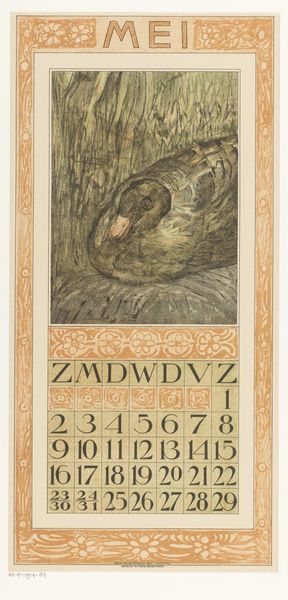
drawing, print, pencil
#
drawing
#
art-nouveau
# print
#
landscape
#
pencil
#
watercolour illustration
#
pencil art
#
botanical art
Dimensions: height 420 mm, width 210 mm
Copyright: Rijks Museum: Open Domain
Editor: Here we have Theo van Hoytema's "Kalenderblad mei met witte eend," created in 1916, currently held at the Rijksmuseum. It seems to be a drawing and print combination depicting a calendar page for May, adorned with images of ducks. There’s a nostalgic feel about it, something very serene. How do you interpret this work? Curator: It speaks to me of cycles, Editor. Calendars themselves are inherently about cyclical time, but look at how Hoytema visually reinforces this. The white duck, almost swan-like, presiding over the month, then below, the ducklings. We have life budding forth – “May” being the heart of Spring. Notice how the plants on either side of the dates almost burst out. Does it remind you of something? Editor: Well, yes, the plants give it an Art Nouveau feel. And now that you mention it, there is a life cycle being shown here. The lone, presumably mother, duck at the top, and her ducklings ready to explore on the bottom. Is this common in calendar art from that period? Curator: Symbolically loaded imagery wasn't always common for calendars. Here, Hoytema invites a reflection on growth and the continuation of life. Look closer: the calendar squares have images as well: lunar cycles. Van Hoytema masterfully embeds smaller symbolic narratives within the larger one, connecting the earthly events of May, the cycle of life of the white duck, to broader cosmic rhythms. I'm wondering though, is this “cycle” symbolism also expressed through materials or method, maybe related to how drawing or print techniques are being used? Editor: Hmm, I hadn’t thought about that…I see it! There's that precise detail in the calendar, likely from a print, offering a sense of order. But the duck images are looser, almost free-flowing, as they seem to be drawings, lending a more organic feel. Curator: Precisely! The ordered structure, symbolic images of seasonal changes, together give the piece this timeless quality, and speaks of nature's continuous unfolding. So even an everyday object becomes art. Editor: It is really interesting how much meaning can be conveyed through such subtle choices of imagery and even the artistic medium. I definitely see this in a new light now.
Comments
No comments
Be the first to comment and join the conversation on the ultimate creative platform.
